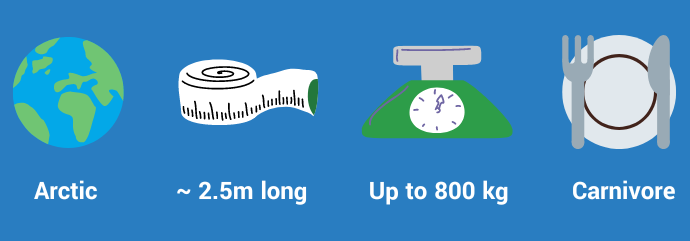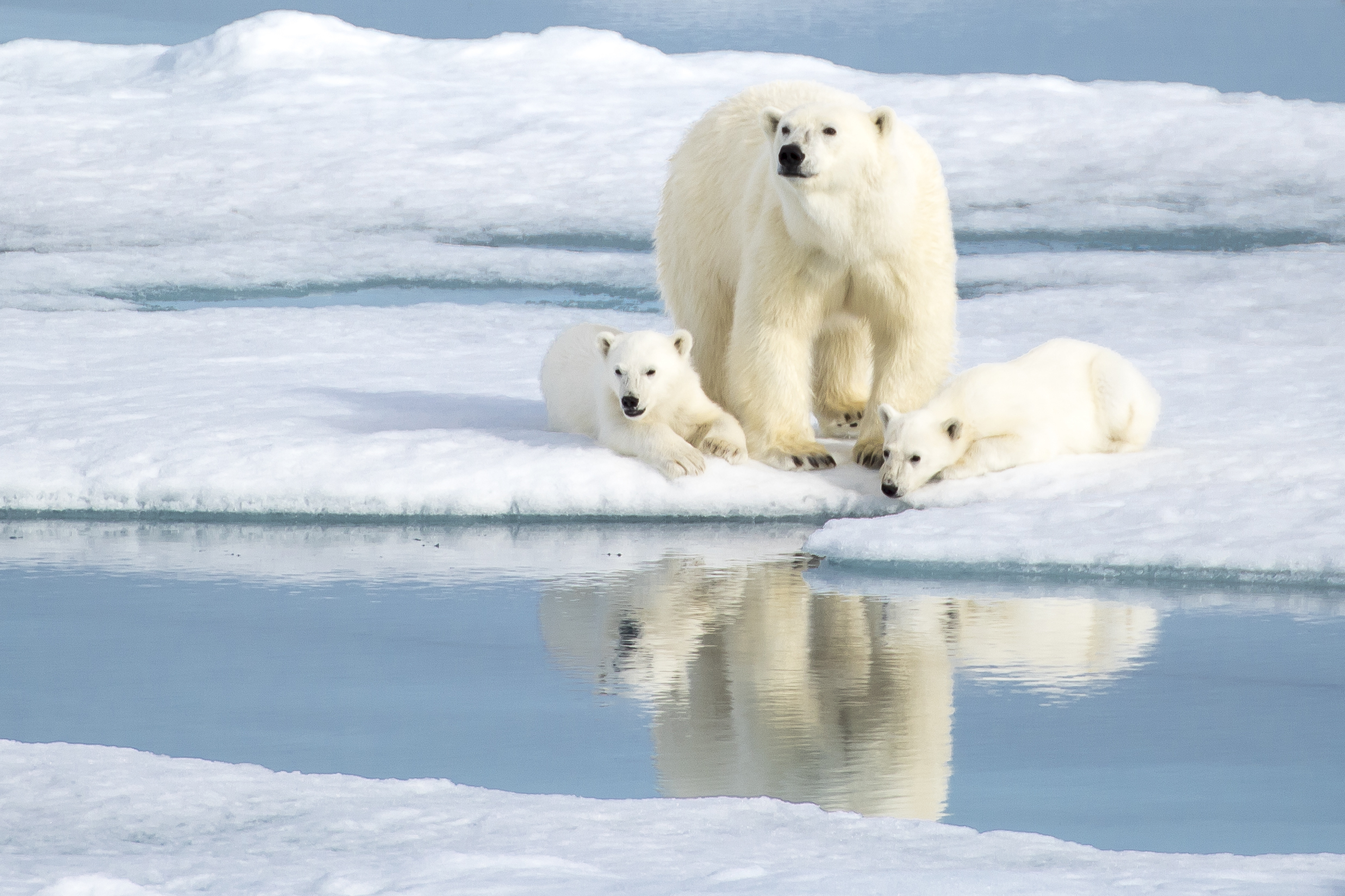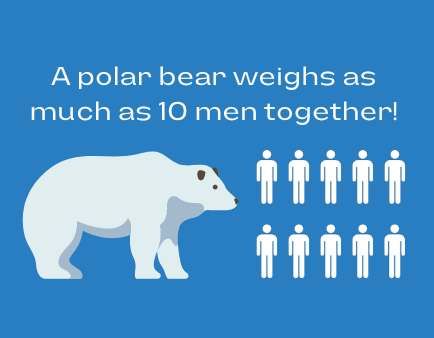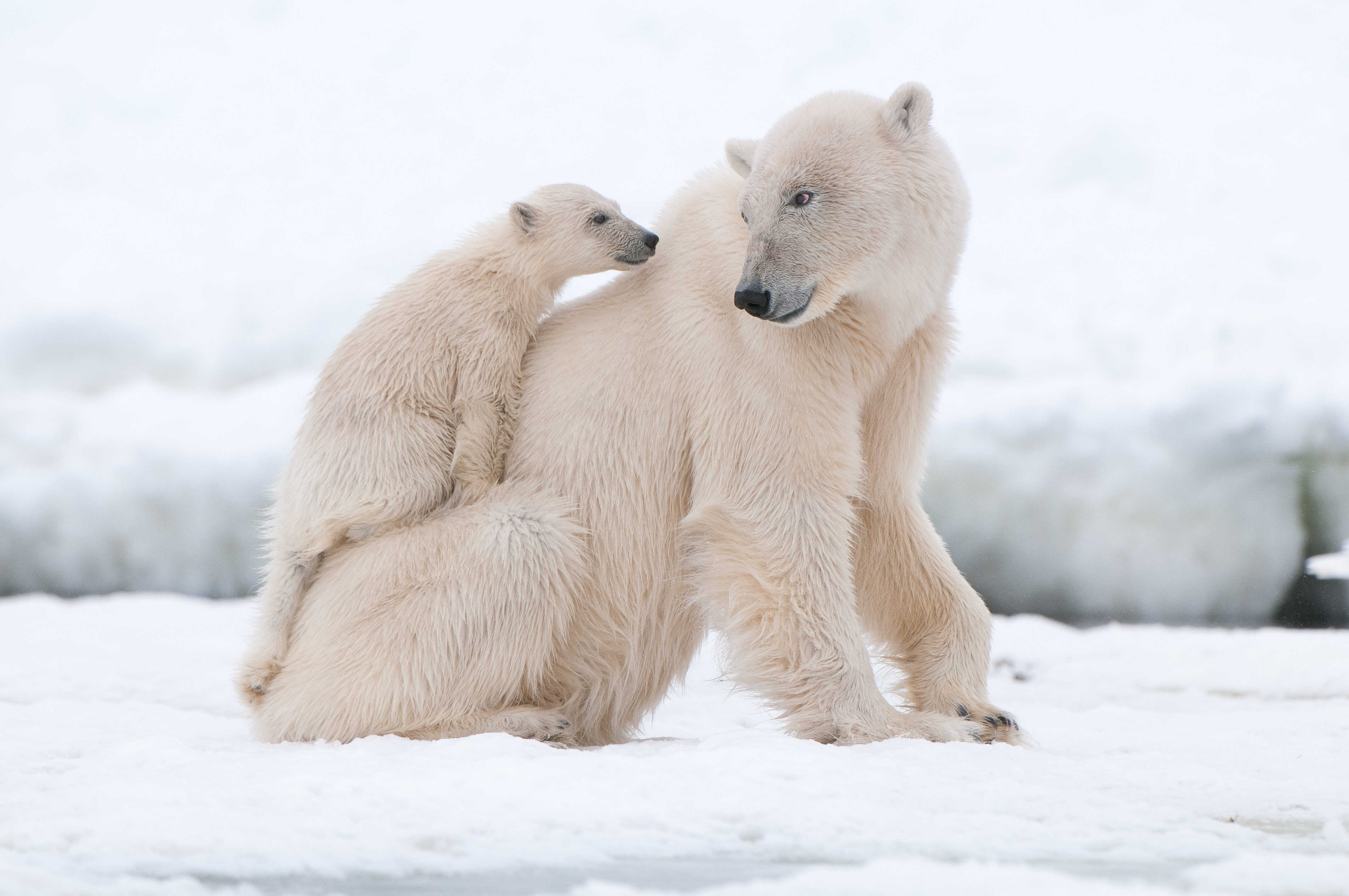6 Facts About Polar Bears
May we present – the king of the Arctic! Polar bears are not only the flagship animals of the North, but they also adorn the cover of various children’s books and serve as an important symbol in the climate crisis.
The marine mammals are home to the freezing Arctic regions ad commonly spotted in countries such as Greenland, Russia, Norway, Canada, and Alaska (US).

What’s more? Check out our six facts about polar bears to learn more about these massive but fluffy creatures!

1. Genius insulation system
Picture a polar bear and all you can see is white, right? Well, apart from their transparent fur that seems white as it reflects sunlight, polar bears actually have black skin. This helps them to absorb heat and keeps them warm in the harsh environments of the Arctic.
On top of that, these furry creatures have a layer of fat called ‘blubber’, which insulates their bodies. The transparent fur serves a purpose as well: Its hollow core traps air, insulates, and keeps them warm while allowing the bears to blend into their white and icy environment.
Nature obviously struck again in all its cleverness!
2. Largest land carnivore on earth
With male polar bears weighing distinctly more than their female counterparts, they can reach weights of up to 800 kg (1750 pounds). To put that into perspective, it equals ten fully grown men! Moreover, our furry friends can grow almost 3 meters (10 feet) long and therefore truly deserve their title as the largest bear species and carnivore on the planet.

3. They’re good swimmers…
Despite their size, polar bears are surprisingly great swimmers! Their main tool is their slightly webbed and extremely wide paws that polar bears use as paddles to get from A to B. They reach a speed of about 10 km/h and don’t mind swimming long distances to get to the next piece of ice.
4. … but bad hunters
Good in swimming must equal good in hunting underwater, right? Not when talking about polar bears! Despite spending half their lives hunting for food, the white giants are rarely successful. Besides whale carcasses and birds, a polar bear’s diet consists mainly of ringed seals and bearded seals.
However, polar bears are not quick enough to catch them underwater. That’s why they use ice floes as a hunting platform, and simply wait for their prey to show up before snatching them out of the water for dinner.
5. Secret weapon: A good nose
On a more positive note: Polar bears are blessed with an extraordinary sense of smell! This does increase their odds when on a hunting mission, as the predators can find seal breathing holes in the ice from many kilometers away.
6. Conservation status: Vulnerable
This is a true rollercoaster of emotions because our last fact about polar bears is not a fun one: Classified as “vulnerable” on the IUCN Red List, our unique friends from up North are experiencing major threats to their existence. The biggest one is clearly climate change, as rising temperatures mean melting ice and consequently decreasing chances for a successful hunt.
On top of that, the situation becomes even more critical as the oil and gas industry is growing interest in the Arctic region – specifically the US government. Gas and oil drilling would crush the sea ice and limit the polar bear’s natural habitat even further. Considering sea ice is already experiencing record lows, habitat destruction is an intensifying threat for the entire, already declining, polar bear population.

All in all, polar bears are quite a natural phenomenon!
With their very own insulation system, they have perfectly adapted to the harsh environment of the Northern regions. With their strong sense of smell and untiring swimming skills, they master life in their own unique way.
Would you like to discover the spectacular Arctic region and maybe catch a glimpse of the largest carnivore on earth yourself?
Check out our tours to the Arctic and contact our team to plan your trip of a lifetime.


Where Will You Go Next ?
- Popular Destinations
- Antarctica
- The Arctic
- South America
- Central America
- More to explore
- Amazon
- Antarctic Circle
- Antarctic Peninsula
- Argentina
- Bolivia
- Brazil
- Canadian Arctic
- Chile
- Colombia
- Costa Rica & Panama
- East Antarctica
- Ecuador
- Galapagos Islands
- Greenland
- Guatemala & Honduras
- Machu Picchu
- Mexico
- Patagonia
- Peru
- South Georgia and Falkland Islands
- Spitsbergen
- Sub Antarctic Islands

Talk to one of our experienced Destination Specialists to turn your Antarctic, Arctic and South American dream into a reality.
Contact us